Posted by:
TxHerper
at Thu Sep 8 21:30:30 2005 [ Email Message ] [ Show All Posts by TxHerper ]
I visited Japan from May 15th thru the 31st. I had a great time, and was able get out and do some herping. I spent most of the time in northern Kyushu, but I also spent a few days on Okinawa, which is a tropical island well to the south of the Japanese mainland.
Here is a pic of the first snake that I found:

Japanese Four-lined Rat Snake, or Shima Hebi (Elaphe quadrivirgata). Unfortunately, it was a fresh DOR, but I wasn’t going to miss the opportunity for some photos.
Not long after that, I found a live specimen that was cruising the base of a rock wall:

Melanistic E. quadrivirgata.
This species was a common sight. Some more pics of E. quadrivirgata, and some very productive habitat:

Wheat field habitat.
I found 6 quadrivirgata under that mat of erosion control, plus a gravid female that was basking.
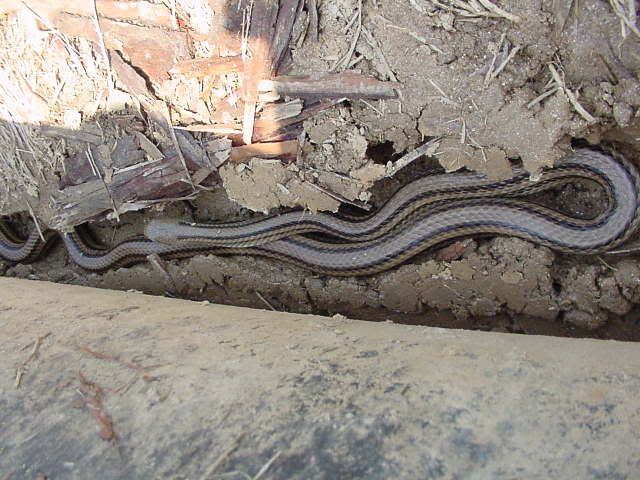
The other side of the road was a terraced rice paddy, and proved to be one of the easiest times I have ever had finding snakes in the field.
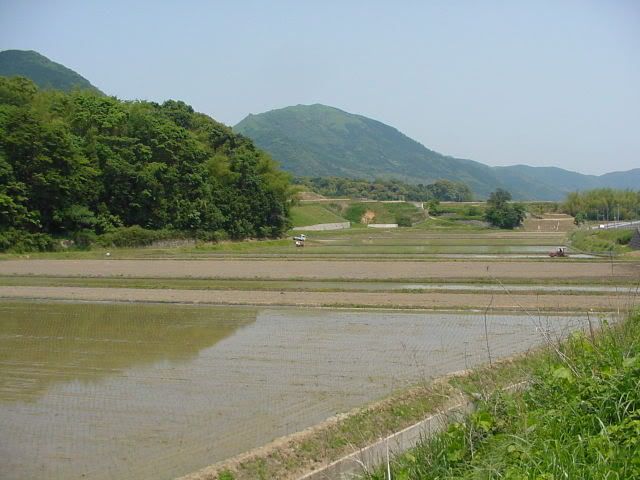
I wonder what that could be:

Here is another:

I found 11 quadrivirgata along the rice paddy terraces. 18 rat snakes in less than two hours; definitely a good time!
The purpose of that expedition was to see Mamushi (Gloydius blomhoffi). When I left for Japan I thought that I would have an easy time seeing one, but that wasn’t to be. On a humorous note, while speaking with one of the rice farmers about Mamushi, she told me that they are a common sight. When I mentioned finding a lot of Shima Hebi (Elaphe quadrivirgata), she told me “Shima Hebi inai.” That translates into “There are no Elaphe quadrivirgata here!” It’s not a bad idea to ask questions, but it’s not easy to find good answers when herps are the subject, no matter where you go.
Here is a pic of the snake that was at the top of my wish list:
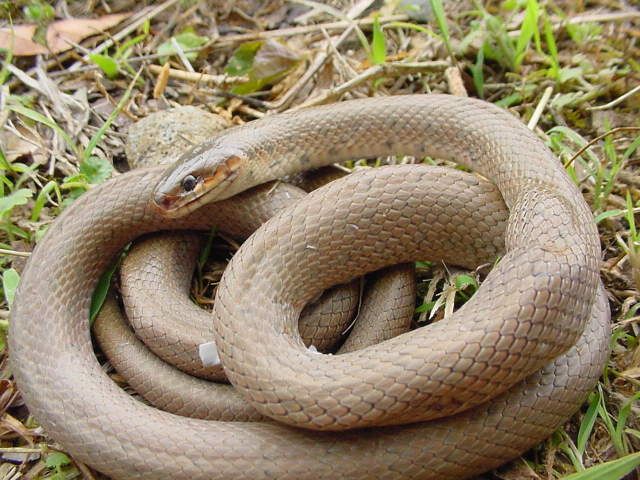
DOR Japanese Forest Rat Snake (Elaphe conspicillata). I was bummed, because it was DOR, but happy with the knowledge that I was searching the right area. I found this snake on a drizzly, overcast morning. The entire day turned out to be the same, so I kept looking. A habitat pic:

I eventually found a live one:
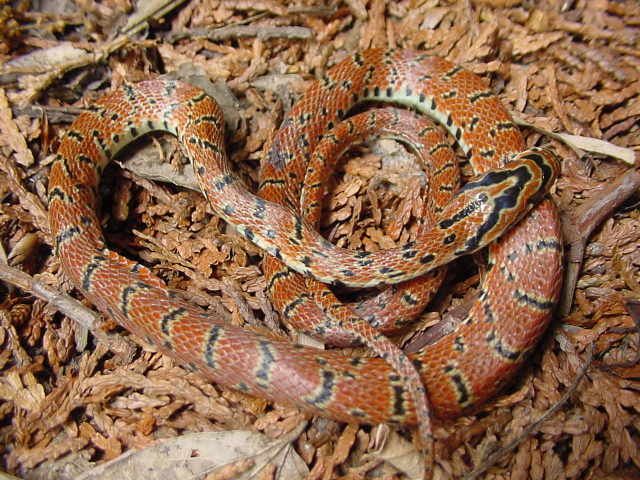
Yearling conspicillata. Unfortunately, that snake perished in a bag. I held onto it for photos at a later time (=after I got back from Okinawa), and learned a hard lesson. Apparently, it tried to escape via the knot in the bag, and its teeth became engaged in the mesh. It couldn’t move forward, and it couldn’t move back. I’ll never keep a small snake in a bag again! Hopefully someone else can learn from my blunder.
This snake was also a common find:

Tiger Keelback (Rhabdophis tigrinus)
This “deadly” snake is not well known, despite its abundance. Apparently, its venom produces effects similar to a Boomslang. They are quick to flee, but if you play with them they don’t hesitate to bite!

Another, less colorful example:
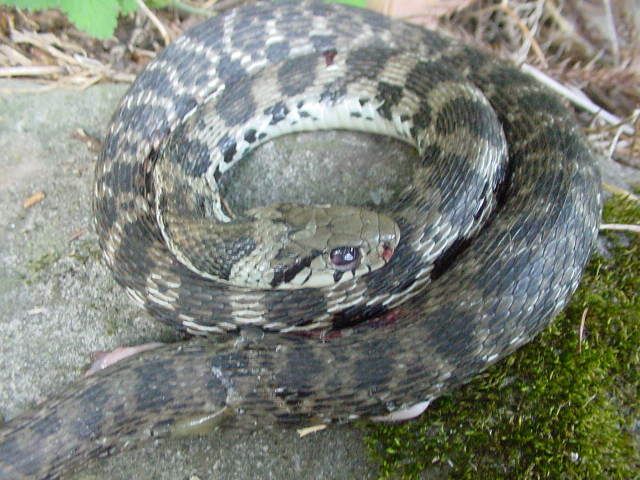
I did find one that was struggling with a Japanese Tree Frog, but it released the frog when I neared for the shot. I observed the frog after release, and it was definitely incapacitated within the minute. At first, it was able to move (without much coordination), but it soon froze into what I will call a fetal position. Bottom line: don’t let them bite you
On Okinawa, I really wanted to spend some time in the field, but due to the fact that I am no longer single, I had to settle for one night of road cruising. The first find was this neat snake:

Okinawa Habu (Trimeresurus flavoviridis).
Luckily, I found a small one. If it had been much larger my tools would have been inadequate. These snakes are heavily hunted, eviscerated, and put into bottles of rice wine (sake). When I lived there three years ago, I ran into a “habu hunter” who was not happy with my presence (to take pictures). I’m pretty sure I saw the same guy on this trip, but didn’t bother talking to him. Here are a couple of more pics of one that avoided being a novelty:
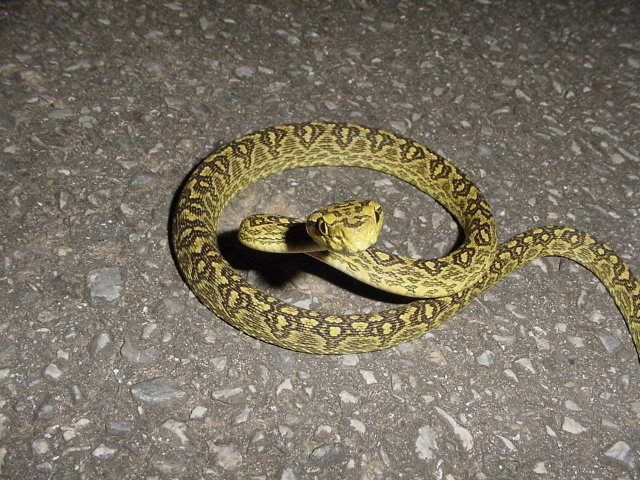
.

This snake is a common find on Okinawa:

A yearling.

A larger specimen. Akamata (Dinodon semicarinatum)
This one was in the 4’ range, but they get much larger. They don’t hesitate to bite, and when they do, they are very focused.
Here are a couple of habitat pics:

Northern Okinawa has a lot of pristine forest, due to rugged terrain.

Disturbed habitats, such as this, are the easiest places to find herps.
Shane
[ Show Entire Thread ]
|





